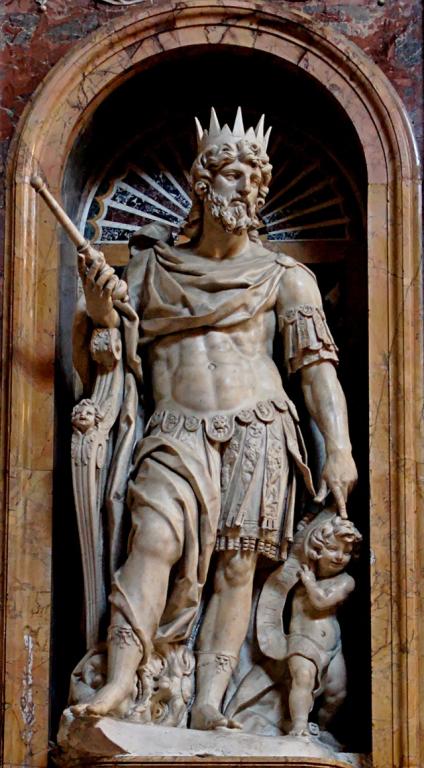
The Scottish evangelical Protestant Egyptologist and archaeologist Kenneth A. Kitchen (b. 1932), is author of the magisterial On the Reliability of the Old Testament (Grand Rapids and Cambridge: William B. Eerdmans Publishing Company, 2003). I will be drawing my arguments from this book.
People complain loudly, “Why no mentions of David or Solomon? Where is their power and splendor?” . . .
The main reason things are so “bright” from 853 onward is that the kings of Assyria commonly named their adversaries in their reports, and from 853 they came into contact with Israel. . . .
[F]rom 1200 to 1050 no Assyrian source names anyone in Philistia, Transjordan, Judah/Israel, or even Phoenicia, as there was no contact with any of these except minimally with Phoenicia. . . .
After Assur-bel-kala [r. 1074-1056 BC], it all went downhill for Assyria for well over a century under obscure kings from Eriba-Adad II to Tiglath-pileser II (1056-935) — precisely the period of Saul, David, and Solomon in Israel. Aramean expansion in Upper Mesopotamia cut them off from Syria and the Levant beyond it. Their contemporary texts are rare. Thus any mention by them of a far-distant David or a Solomon (up to 700 marching miles away) would be inconceivable without some very special reason. (None is known.). As for Babylon, her rulers (even the energetic Nebuchadrezzar I) were limited in wars, etc., to relations with nearby Assyria and Elam, never with the far-distant Levant. They would know nothing whatever of a David or a Solomon, unless some direct trade link occurred — for which development we lack all evidence currently. (pp. 88-89)
In Egypt, imperial campaigns in the Levant ceased with Ramesses III by circa 1175. There is currently no reason whatever to postulate any further Egyptian warlike activity there until the reign of Siamun . . . circa 970-960, . . . and thereafter only Shoshenq I [r. 943-922 BC], who left indubitable record of his expedition in Palestine. But exactly like all his New Kingdom predecessors, Shoshenq I did not deign to name his adversaries, . . . So no mention of the names Judah, Israel, Rehoboam, Jeroboam was ever to be expected in his normal-type list that we do possess in this instance. Most Delta remains are destroyed, and Upper Egypt coffins bear magic spells, not war reports! (p. 89)
Dr. Kitchen then analyzes lesser kingdoms, where “there is even less prima facie hope” (p. 90) that they would ever name David, etc. Neo-Hittite kingdoms were occupied with their own affairs and their region (Anatolia/Turkey and Syria) and not with even Phoenicia, let alone Canaan. Almost no Aramaeans inscriptions prior to the 9th century BC have been found. Almost nothing can be found in Phoenicia prior to the kings of Byblos (c. 1000 onward): which only mention their own affairs. Nothing at all survives from this time in the records of Tyre and Sidon, either.
The repeated destruction of Jerusalem (particularly by the Babylonians and Romans but also many others) is not conducive to finding relics of David, although recently, excavations in the City of David — most undertaken after the 2003 date of Kitchen’s book — are very promising.
The publication of fragments of an Old Aramaic stela from Tell Dan in 1993/1995 brought to light the first recognized nonbiblical mention of the tenth-century king David, in a text that reflected events of the year 841 and would have been set up at no great interval after that date. (p. 92)
Kitchen notes a second mention of the “House of David” in the Mesha Stele (c. 840 BC), connected with King Mesha of Moab, “written in a variant of the Phoenician alphabet, closely related to the Paleo-Hebrew script” (Wikipedia). Kitchen comments: “So we have David mentioned twice in retrospect, some six generations after his death” (p. 93).
A third possible mention was described in New York Times book review in 2000 (though it was skeptical of the claim):
The Tel Dan inscription inspired another sighting of David’s name on a long-known text. That text is the relief of Pharaoh Shoshenq (called Shishak in the Bible, 1 Kings 14:25-27) carved on the temple of Amun in the ancient Egyptian city of Thebes. The relief hails Shoshenq’s raid into Palestine in the year 925 B.C.E. It contains a long list of names of places that Shoshenq claims to have captured.
The British Egyptologist Kenneth Kitchen has very recently suggested that David’s name is in that list. The name occurs in an expression that Kitchen translates “highland/heights of David” (Fig. 4). The immediate context, he says, is a set of places in southern Judah and the Negev (the southern part of Palestine) where, the Bible reports, David was active when he was fleeing Saul (1 Samuel 21-30). The area, Kitchen concludes, must have been known by David’s name.
Kitchen doesn’t claim certainty for this, but opines that:
[N]o better alternative seems forthcoming. This would give us a place-name that commemorated David in the Negev barely fifty years after his death, within living memory of the man. (p. 93).
***
Related Reading
Bible & Archaeology / Bible & Science (A Collection)
***
Photo credit: Jastrow (2006). Statue of King David (1609–1612) by Nicolas Cordier (1567-1612) in the Borghese Chapel of the Basilica di Santa Maria Maggiore in Rome, Italy [public domain / Wikimedia Commons]
***
Summary: We don’t have much extra-biblical archaeological evidence concerning King David. Archaeologist Kenneth Kitchen provides reasons why. But there are two fairly indisputable finds.













